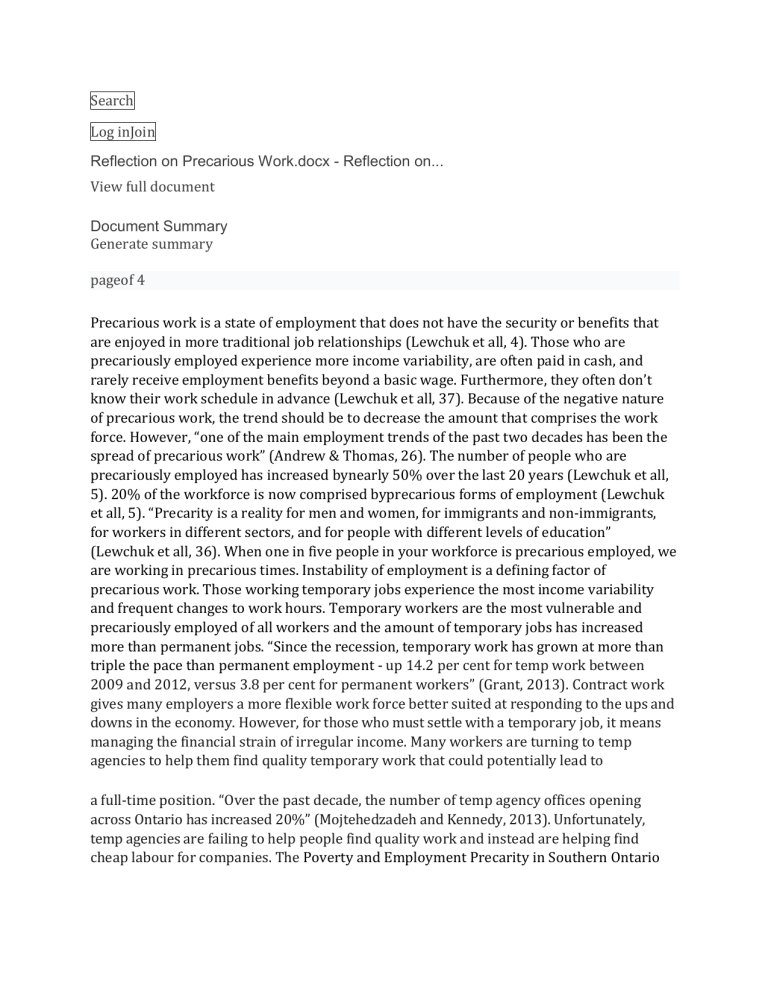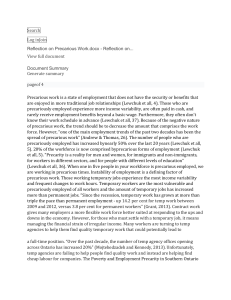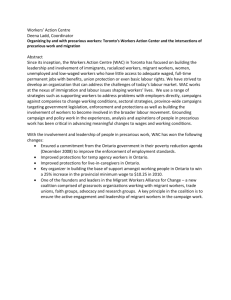
Search Log inJoin Reflection on Precarious Work.docx - Reflection on... View full document Document Summary Generate summary pageof 4 Precarious work is a state of employment that does not have the security or benefits that are enjoyed in more traditional job relationships (Lewchuk et all, 4). Those who are precariously employed experience more income variability, are often paid in cash, and rarely receive employment benefits beyond a basic wage. Furthermore, they often don’t know their work schedule in advance (Lewchuk et all, 37). Because of the negative nature of precarious work, the trend should be to decrease the amount that comprises the work force. However, “one of the main employment trends of the past two decades has been the spread of precarious work” (Andrew & Thomas, 26). The number of people who are precariously employed has increased bynearly 50% over the last 20 years (Lewchuk et all, 5). 20% of the workforce is now comprised byprecarious forms of employment (Lewchuk et all, 5). “Precarity is a reality for men and women, for immigrants and non-immigrants, for workers in different sectors, and for people with different levels of education” (Lewchuk et all, 36). When one in five people in your workforce is precarious employed, we are working in precarious times. Instability of employment is a defining factor of precarious work. Those working temporary jobs experience the most income variability and frequent changes to work hours. Temporary workers are the most vulnerable and precariously employed of all workers and the amount of temporary jobs has increased more than permanent jobs. “Since the recession, temporary work has grown at more than triple the pace than permanent employment - up 14.2 per cent for temp work between 2009 and 2012, versus 3.8 per cent for permanent workers” (Grant, 2013). Contract work gives many employers a more flexible work force better suited at responding to the ups and downs in the economy. However, for those who must settle with a temporary job, it means managing the financial strain of irregular income. Many workers are turning to temp agencies to help them find quality temporary work that could potentially lead to a full-time position. “Over the past decade, the number of temp agency offices opening across Ontario has increased 20%” (Mojtehedzadeh and Kennedy, 2013). Unfortunately, temp agencies are failing to help people find quality work and instead are helping find cheap labour for companies. The Poverty and Employment Precarity in Southern Ontario (PEPSO) did a study and interviewed people who are finding work through temp agencies. Those interviewed said






